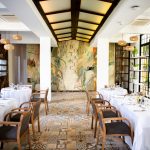Chongwe Community Art Gallery
More than just art: a story of trust, passion and community pride
Walking through the Chongwe Community Art Gallery (CCAG) space, there is a sense of something life-size one will take in – visually in terms of thematic treatment in contemporary artworks and philosophically in terms of institutional decisions around which artist gets selected for an exhibition. And true to a rare walk-in open-door policy, unlike signing up to the ethos of cut-throat commercial gallery practice in jostling for viability, CCAG instead commits to welcoming any artist looking for exhibition or sales space without an encumbering litany of preconditions or a haughty pretentiousness one is inclined to find in the world of elite contemporary or exclusive fine art circles. Now coming into its own, CCAG is an organic manifestation of trust, of thinking together in a shared vision and passion for public visual arts.

Garden City Mall’s management enlisted soft-spoken sculptor Joseph Shakulipa Chinunga to create artworks that now take pride of place on the mall’s manicured lawns and walkways. The two parties discovered a shared vision and passion for public visual arts and CCAG (formerly Zambia Ultra Art Gallery) was born; Chinunga now serves as the gallery’s board chairperson.

Situated at Garden City Mall off Great East Road, adjacent to Airport Roundabout, CCAG intends to facilitate intergenerational conversations and collaborations among promising young talents and mid-career creative and established artists. Each with their bold individual style and expressive media range from painting, sculpture, drawing, photography, and a touch of experimentation in fabric design. Such as the impressive detail in pencil drawing works of young Abel Ngoma, teasingly surrealistic, multi-hued paintings by seasoned Alumedi Maonde and Mwamba Chikwemba whose work has feminist undertones, Nsofwa Bowa’s figurine metal sculpture highlighting an unmistakable feminine African torso. Indigenous Zambian cultural motifs inspired Aubrey Chali, whose pinpoint brush technique creates a pixel-perfect look to his final canvas finishes.

In making cultural and socio-political commentary on everyday situations of youths and women amongst other ordinary rural and urban Zambians (some dire and others inspirational) in celebration of unique, diverse local culture, the aesthetic value and therapeutic effect of the natural environment, artworks available at CCAG, therefore, do not shirk the responsibility to portray and interrogate the local political economy landscape affirmatively, too. This is evident in Andrew Mwananshiku’s ‘Breakdown’, depicting a road scene of a broken down, fully laden pickup van being pushed uphill on a gravel road by its mix of female and male passengers.
It speaks immediately to the challenges of public transport for peri-urban to rural populations but also suggests a unity of purpose across the genders and ages in community building initiatives. George Mubanga’s ‘Self Development’ is a reminder of how large the perennial questions loom, about inadequate local employment opportunities and nonexistent or unresponsive economic empowerment programmes, while Albert Kata turns around the narrative on hygiene at a personal and communal level as well as addressing notions of sustainable green environment in ‘Wash Day’.

Because art intends to disseminate knowledge within a diverse society, Zambia’s visual arts have the responsibility and ability to promote society’s prevailing cultural environment and work, ensuring that local communities develop motifs that carry and create meaning. In relation to its creators and collaborators and the context of prevailing local political, social, economic and cultural influences, Zambian visual art is a part of the broader struggle for self-assertiveness of the post-independence African state.
The gallery prides itself on its core objectives – existing for and in partnership with the local community to achieve its core aims, of which high on the list are networking, financial success and career development for its member artists. The socially pulsed subject matter carried genially by most artworks is as it should be. Because, locally as abroad, art should also be a defining factor for diversity and identity. But it is often rendered ineffectual through a conservative or selective contemporary art museum and gallery practices, from collecting to display.

Given that most exhibitions are temporary and intended to generate income for artists, CCAG has a vision for closer collaborations with artists by running a residency for research and production purposes. Since there is no such thing as impartial art history, this quest for domesticity and relevance of visual arts in Zambia by CCAG is its institutional response to a need for the emergence of alternative art theories or canon – “what art, for whom, by who, how and why”.

But as that age-old idiom goes, seeing is believing. So instead, take this article at face value, please tweak your schedule, mark it in your diary and make that journey to Garden City Mall’s CCAG. Nothing can be more cathartic than a walk around a welcoming gallery space to engage with and marvel at some of Zambia’s impressive visual art. To top it all off, you may enjoy walking away with a genuinely collectable art piece!
Fast Facts
- Chongwe Community Art Gallery (CCAG), previously called Zambia Ultra Art Gallery, is located at Garden City Mall on the outskirts of Lusaka. The gallery opened in 2018 and has been a sanctuary for both artists and art lovers.
- Since its inception, CCAG has held three solo exhibitions and four women’s exhibitions, and has represented up to 40 artists.
- CCAG is an artist-led collective with not-for-profit status.
- The gallery is committed to inclusive good practice institutional ethos regarding gender representation in its management structures.
- CCAG is affiliated to the Zambia National Visual Arts Council.



